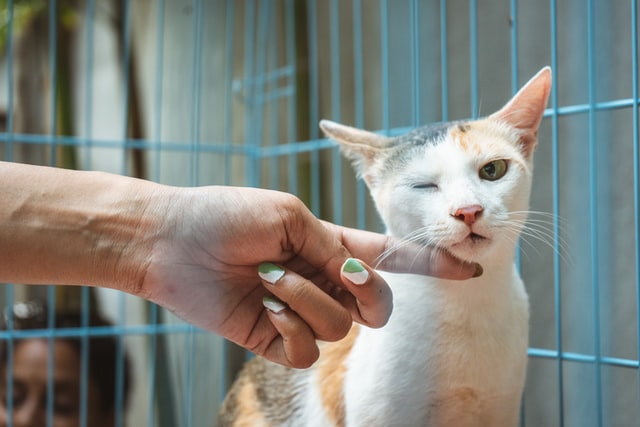How to Get Started as a Veterinary Receptionist
You don’t need a Doctorate of Veterinary of Medicine (DVM) to land a job in the veterinary medicine industry. While licensed veterinarians require a DVM, there are entry-level positions available, such as receptionists, with less-stringent requirements. As a veterinary receptionist, you’ll provide essential services for a veterinary clinic while gaining real-world experience in the process. How do you get started as a veterinary receptionist exactly?
What Is a Veterinary Receptionist?
A veterinary receptionist is a front-desk worker who performs administrative services for a veterinary clinic. If you’ve ever taken a pet to a veterinary clinic, you may recall talking to a receptionist. Most veterinary clinics have at least one veterinary receptionist at the front desk who’s responsible for moving clients in and out of the practice. Before meeting with a veterinarian, clients must “check in” with the receptionist.
Some of the responsibilities and duties of veterinary receptionists include the following:
- Greet clients as they enter the clinic
- Answer phone calls
- Schedule appointments for clients
- Call clients to verify their appointments
- Send emails
- Respond to emails
- Accept and process clients’ payments
- Handle insurance
- Manage inventory of nonprescription products available for sale
- Clean the waiting area
Benefits of Working as a Veterinary Receptionist
Working as a veterinary receptionist offers a myriad of benefits. For starters, you’ll earn a decent income. While income varies from clinic to clinic, veterinary receptionists usually get paid more than receptionists in other industries.
Most veterinary clinics offer additional perks to their receptionists beyond that of a paycheck. For instance, you may be able to secure health insurance through the clinic at which you work. Some veterinary clinics even offer dental and vision insurance as well. The clinic may still require you to pay for insurance, but they’ll typically cover some of the costs themselves. As a result, you won’t have to spend a fortune on private insurance.
If you have a pet — or multiple pets — you may be able to take advantage of discounted products and services when working as a veterinary receptionist. Veterinary clinics offer discounts to their employees as an incentive to keep them on board. Whether your pet needs a vaccination, an annual check-up or surgery, the clinic may offer the service as a discounted price. This is just one more perk of working as a veterinary receptionist.
Perhaps the greatest benefit of working as a veterinary receptionist is the experience it offers. You’ll learn the inner-workings of the veterinary medicine industry and how clinics operate. During your tenure, you’ll learn about the products and services sold at veterinary clinics in a real-world environment. If you have aspirations of becoming a licensed veterinarian, you can apply this experience to increase your chances of success. Clinics are more likely to hire veterinarians with previous experience — even if it’s administrative experience.

Graduate High School or Get a GED
If you’re hoping to land a job as a veterinary receptionist, you’ll need to prepare your credentials. As previously mentioned, you don’t need a DVM to work as a veterinary receptionist. Veterinary receptionists are administrative workers and not licensed veterinarians. Therefore, you don’t need a DVM to become a veterinarian receptionist. Nonetheless, most veterinary clinics have certain requirements that receptionists must meet to get hired.
At minimum, you’ll typically need a high school diploma or a General Educational Development (GED) to work as a veterinary receptionist. If you’re still in high school, continue with your education. Once you’ve graduated or obtained your GED, you can proceed with the preparation of your resume.
Prepare Your Resume
You should prepare your resume before applying for veterinary receptionist jobs. Also known as a curriculum vitae (CV), this document should contain your work history, education history and skills. Not all veterinary clinics require applicants to provide a resume. Many will hire applicants without this document. Like with most jobs, though, a resume will distinguish you from other applicants to increase your chances of getting hired as a veterinary receptionist.
Search for Job Openings
After completing your resume, you can begin to search for veterinary receptionist job openings at clinics in and around the area where you want to work. Many veterinary clinics will post classified ads to recruit veterinary receptionists. As you scour these classified ads, pay attention to their requirements. Assuming you have a high school diploma or GED, as well as a completed resume, you’ll have a good chance of getting hired.
Keep in mind that you may have to apply for several veterinary receptionist jobs before getting hired. If a clinic has already filled a previously open position, it probably won’t hire you. Therefore, you should remain persistent in your job search by applying at multiple veterinary clinics. As long you put forth the effort, however, you should be able to land a job as a veterinary receptionist. Veterinary clinics of all shapes and sizes need receptionists, so there’s strong demand for these administrative workers.

